Realistic simulations - how detailed can scenarios be modeled, networked and calculated?
![[Translate to English:] Merkle CAE Solutions Teaserbild Vernetzung OP [Translate to English:] Merkle CAE Solutions Teaserbild Vernetzung OP](/fileadmin/_processed_/a/1/csm_Teaserblog_114_Vernetzung_OP_merkle_cae_solutions_d3f556184b.png)
Today, when we watch movies that are 20 or 30 years old, we wonder why we didn't fall asleep and how we could have found the stunts, scenarios and backdrops in the film exciting back then. Too much has happened in the meantime and we are used to everything in the film looking realistic.
Let's just look at computer games of the latest generation. These are often so true to reality that you think you're in a modern movie.
A similar development is taking place in the field of simulation. The simulation must not only be physically correct, but also look good and professional so that people trust the results.
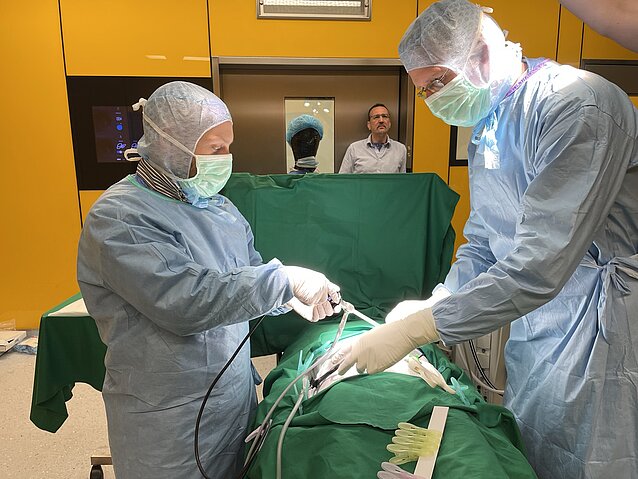
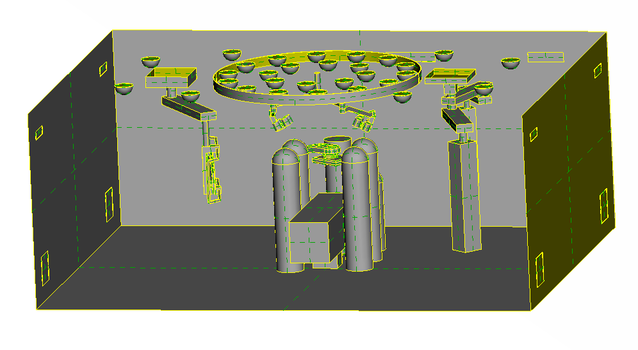
A human being, idealized according to standards as a cylindrical barrel, with a hemisphere as a head, makes the best simulation implausible, even if the physics behind it may be correct. In addition, there are requirements that even the surgical instruments are held correctly, otherwise the results could be influenced by this error.
For machines and buildings that exist as 3D CAD models, the modeling effort is mainly a question of proper pre-processing. Data can be read in and used directly.
However, when it comes to modeling the flow in an operating room with people, i.e. patients, surgeons, anesthesiologists and support staff, even more so when you want to compare the results with measurement results from real scenarios, the air becomes very thin.
The geometries of the human protagonists with surgical clothing, hoods and masks are very complex and are not available as 3D data for the time being.
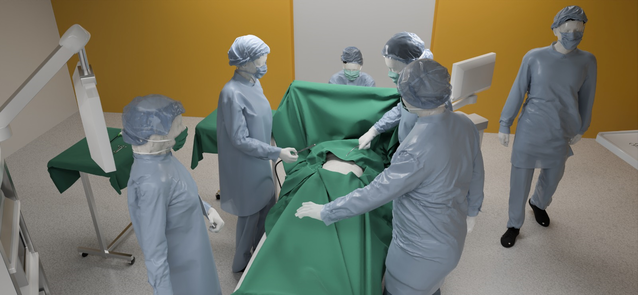
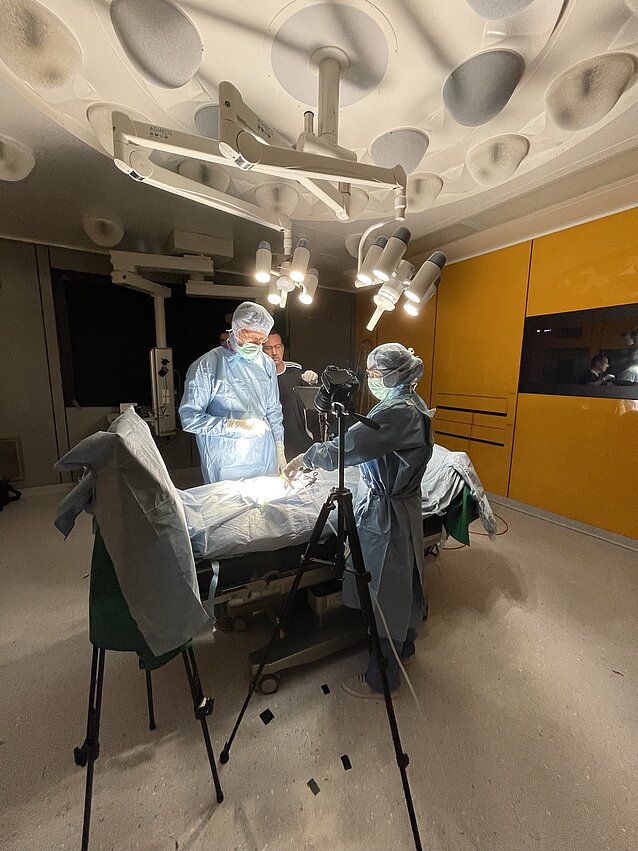
Merkle CAE Solutions has taken a groundbreaking step for us (and the world) here with a research project that we carried out together with ICCAS in Leipzig, OTH Amberg Weiden, DLR and the company OHB.
The aim here is to measure and simulate possible cross-contamination in order to prevent the spread of hospital germs wherever possible.
How well the simulation results from Merkle CAE Solutions agree with the measurements performed is not even the topic here. I will report on this in a separate blog article after the project is completed.
In the context of this blog, I would like to focus specifically on the aspects of how such a scenario as shown in Figure 4 can be modeled at all and transformed into a computable model.
With a lidar scanner, the scenarios can be roughly recorded, but the data is generally not suitable for direct further processing without considerable post-processing or loss of quality.
How fortunate that my son Julian works in the field of game design and, using videos, photos and lidar scans from the project, is able to depict the scenario with amazing precision as a 3D model (see cover image and Figure 3).
The operating room and parts of the equipment, in particular the TAV (laminar air flow system), originate from existing CAD data of the operating room. The people were modeled and positioned with appropriate software tools right down to the clothing and can even move in some cases. Side tables, monitors, etc. can either be remodeled or even invited from manufacturers as step data.
In terms of modeling, however, the real challenge now comes for us: A computationally capable mesh must be generated with which simulations are feasible at all. Especially in clothing, there are ugly undercuts.
A detail of the finished computational mesh is shown in Figure 5.
How exactly the networking works with minimal effort is still our secret. The following results from the flow simulation with Star CCM+ show that Merkle CAE Solutions can do it.
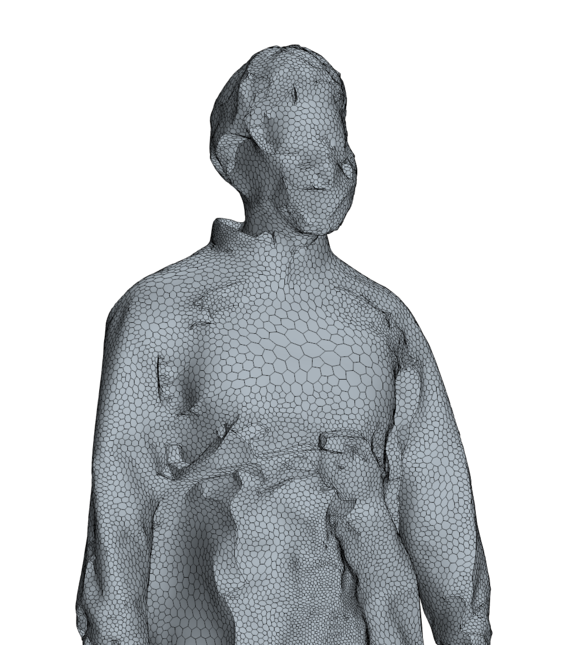
What we would still wish for here would be better post-processing options. There is still a considerable difference between the cover image and the result images - like between an old and a modern film 😊.
I will be happy to keep you informed about the progress of the project
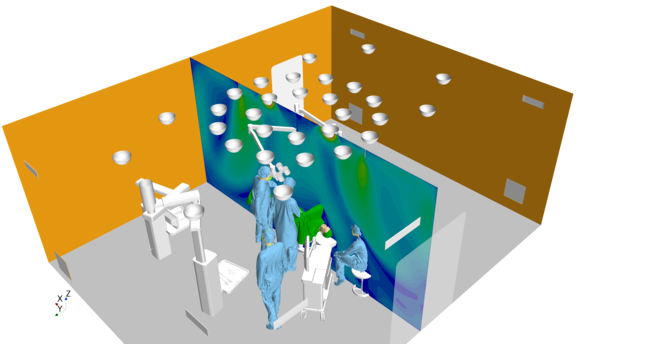
As always, if you have a taste for this and have similar requirements, I look forward to hearing from you. But also comments and suggestions are always welcome. Just write me an email or leave a comment on the blog.
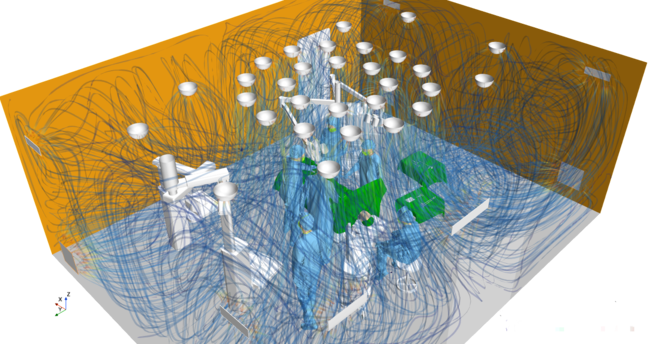
Yours Stefan Merkle

PS: By the way, Merkle CAE Solutions also takes into account the influence of body heat on the flow. After all, every person is a heat source, and warm air is known to rise.
PPS: Astronauts, firemen or a guinea pig on a parachute... Challenge us!